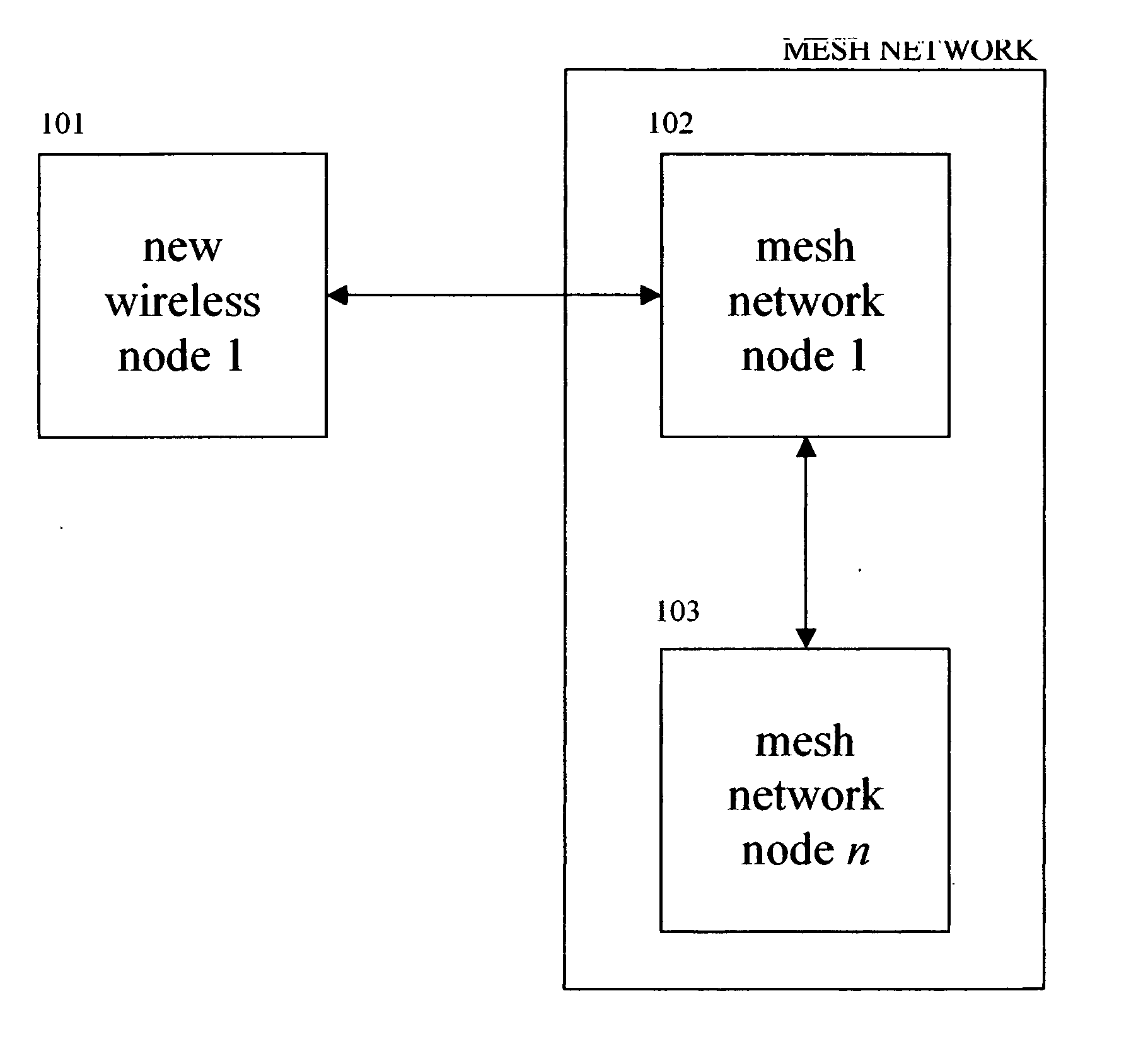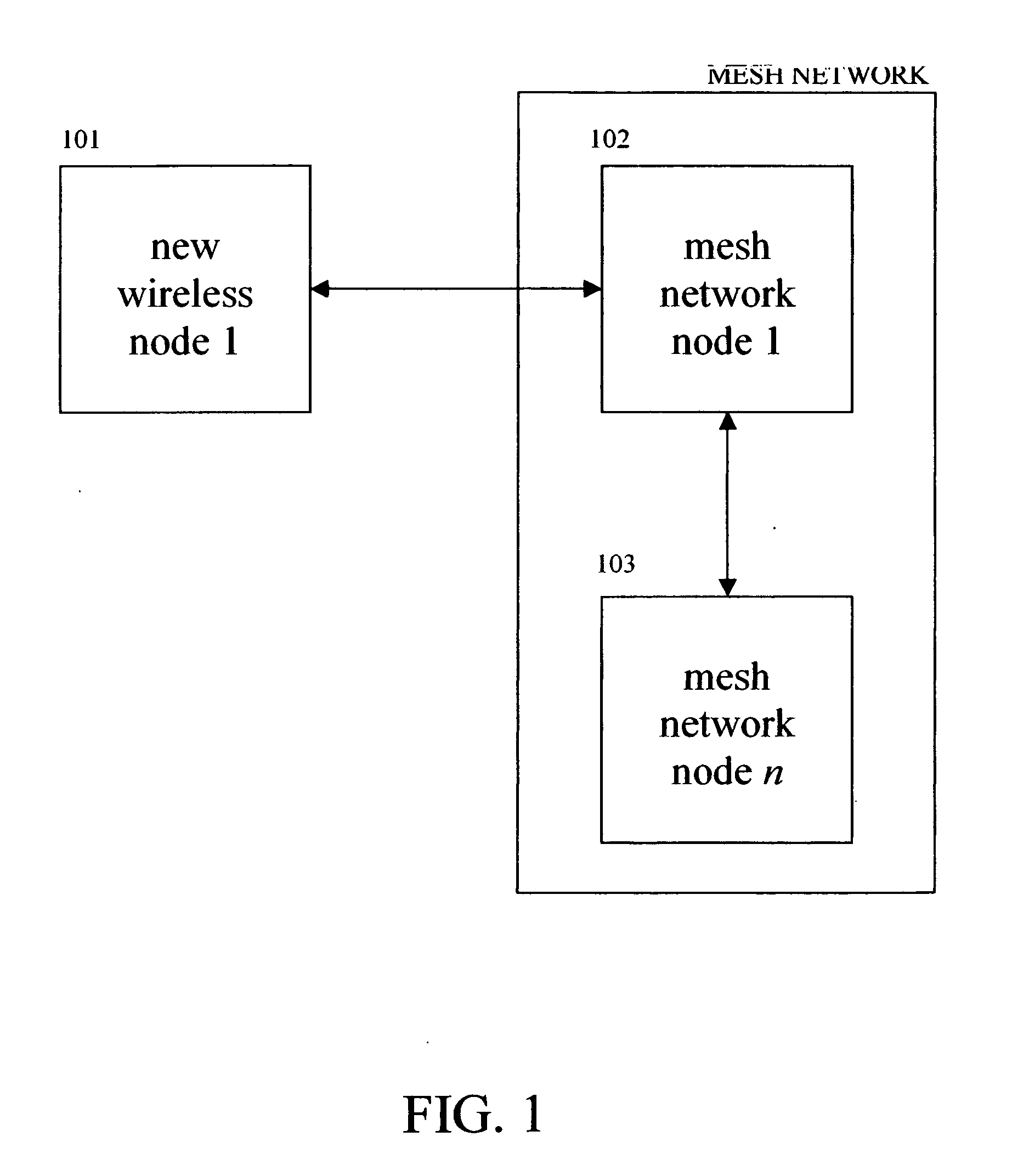Diagnosis of embedded, wireless mesh networks with real-time, flexible, location-specific signaling
a wireless mesh network and wireless mesh technology, applied in the field of data processing system protection, can solve the problems of never providing policy control on a mesh network, no provision in the prior art for flexible, location-specific diagnosis of wireless mesh networks,
- Summary
- Abstract
- Description
- Claims
- Application Information
AI Technical Summary
Benefits of technology
Problems solved by technology
Method used
Image
Examples
Embodiment Construction
[0084] The operation of the present invention will now be described in conjunction with the Drawing Figure.
[0085]FIG. 1 is a flow diagram illustrating an embodiment of the present invention, which protects wireless mesh networks.
[0086] Step 101 represents a new node that attempts to authenticate to the nearest part of the existing mesh network at step 102 over a radio frequency (RF) connection. When the new node at step 101 attempts to connect to one of the existing nodes at step 102, the protection mechanism automatically begins. The existing node at step 102 first checks to see if the new node at step 101 has updated its security, including an updated virus scanner, firewall, vendor patches, etc.
[0087] If the new node at step 101 does not have updated security, then the node at 102 automatically quarantines it until it is updated. The node at 102 can also optionally provide the node at 101 with the information or files needed to update.
[0088] Once the new node at step 101 is u...
PUM
 Login to View More
Login to View More Abstract
Description
Claims
Application Information
 Login to View More
Login to View More - R&D
- Intellectual Property
- Life Sciences
- Materials
- Tech Scout
- Unparalleled Data Quality
- Higher Quality Content
- 60% Fewer Hallucinations
Browse by: Latest US Patents, China's latest patents, Technical Efficacy Thesaurus, Application Domain, Technology Topic, Popular Technical Reports.
© 2025 PatSnap. All rights reserved.Legal|Privacy policy|Modern Slavery Act Transparency Statement|Sitemap|About US| Contact US: help@patsnap.com


